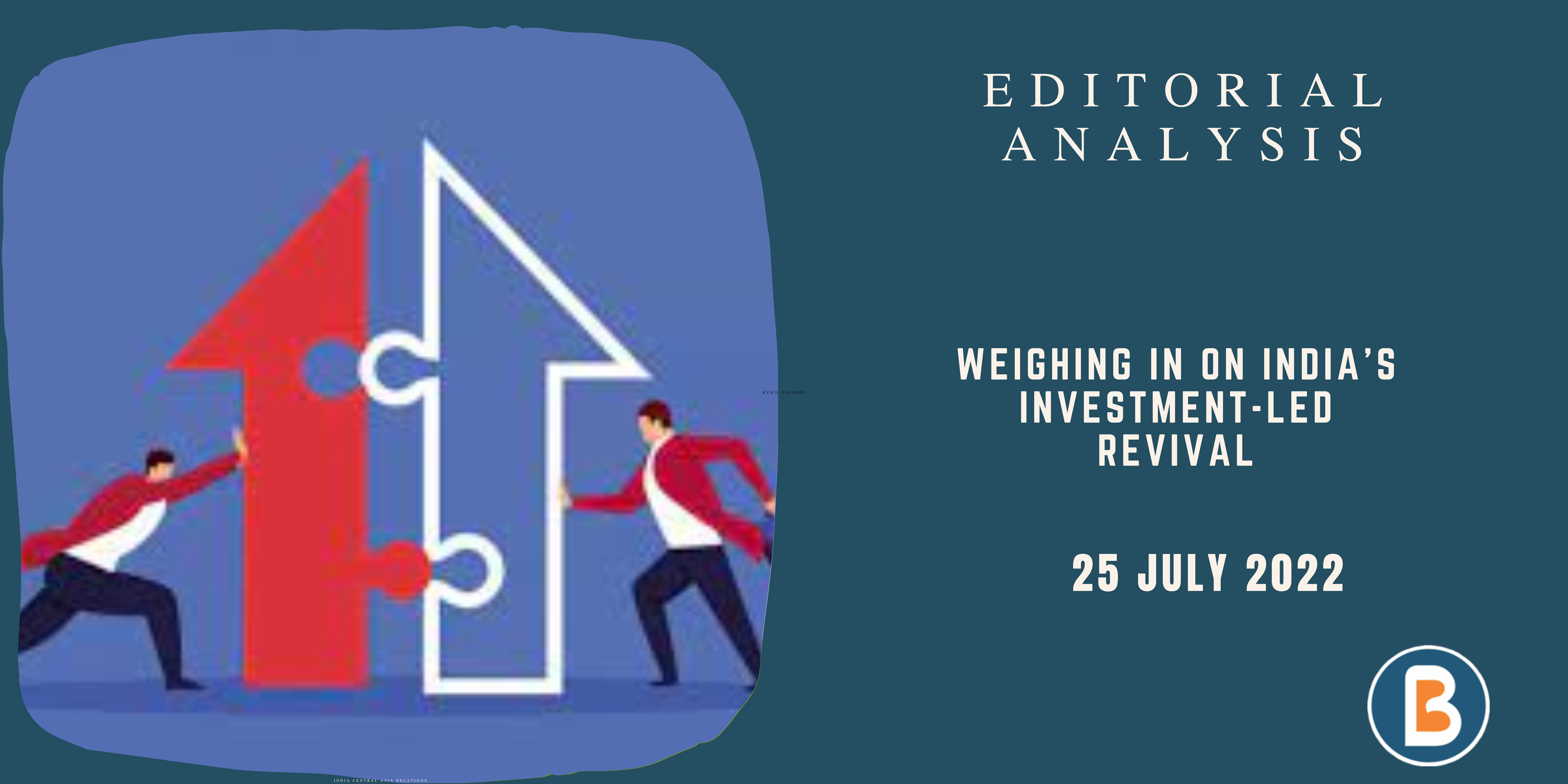Calibrating a strategy for India’s future growth
Context:
The changing global scenario and its impact on India’s growth trajectory, prompting a reassessment of economic strategies and policies.
Relevance:
GS-03 (Indian Economy)
Mains Question
Evaluate India’s growth trajectory in the changing global landscape, outlining key challenges and proposing strategies for sustainable and inclusive development. (150 words)
Dimensions of the Article:
- Global Challenges and India’s Growth Projection
- Shift in Export-Led Growth
- Importance of Domestic Savings
- Implications for Investment and Growth
- Employment Challenges and Opportunities
- Climate Concerns and Sustainable Growth
- Fiscal Responsibility for Sustainable Growth
Global Challenges and India’s Growth Projection
- The Reserve Bank of India forecasts a 7% growth in 2023-24, while the IMF and World Bank estimate it at 6.3%.
- Geopolitical conflicts, such as the Russia-Ukraine and Israel-Hamas wars, contribute to deglobalization, impacting supply chains and international settlements.
- With a focus on reducing dependence on imported petroleum, India faces a shift in its growth dynamics.
Shift in Export-Led Growth
- India experienced a peak in export-led growth at 25% of GDP in 2013-14, but this trend is changing. In 2022-23, exports accounted for 22.8%, down from a trough of 18.7% in 2019-20 and 2020-21.
- The article suggests that India must adapt its growth strategy, relying more on domestic drivers.
Importance of Domestic Savings
- To sustain a 7% real growth, India must prioritize domestic savings. However, concerns arise from a decline in household sector savings in financial assets, falling from 7.8% (2015-16 to 2019-20) to 5.1% (2022-23).
- This decline poses risks to India’s growth potential as these savings fuel government and corporate investment demands.
Implications for Investment and Growth
- Savings translate into gross fixed capital formation (GFCF), crucial for sustaining growth.
- The estimated nominal investment rate in 2022-23 was 29.2%, and to achieve 7% growth, it needs to be increased, considering the Incremental Capital-Output Ratio (ICOR).
- The article emphasizes the need to augment investible resources for a higher growth trajectory.
Employment Challenges and Opportunities
- India faces a unique challenge with a growing working-age population amid increasing labor-saving technologies.
- While the working-age population is projected to peak in 2030, there’s a need to allocate resources for training and skilling.
- Employment growth depends on GDP growth, and non-agricultural sectors must absorb labor released from agriculture and adapt to technological advancements.
Climate Concerns and Sustainable Growth
- India has committed to carbon reduction targets, aiming to reduce emissions by one billion tonnes by 2030 and achieve net-zero emissions by 2070.
- Initiatives like the Green Grids Initiative and emphasis on electric vehicles align with climate goals. The article suggests minimizing adverse growth impact by prioritizing a service sector that is relatively climate-friendly.
Fiscal Responsibility for Sustainable Growth
- Maintaining fiscal responsibility is crucial for sustained growth. The article stresses the need to adhere to fiscal responsibility targets, ensuring combined fiscal deficit and debt to GDP ratios are brought down.
- This approach would keep interest payment burdens manageable, resulting in government dissavings reduction and overall economic savings augmentation.
Way Forward and Conclusion:
In the coming years, achieving a growth rate of 6.5% seems feasible, partially representing recovery from the COVID-19 period.
- To sustain growth at 7% to 7.5%, India must focus on raising savings and investment rates, enhancing skill acquisition, and adopting employment-friendly technology.
- Adhering to fiscal responsibility targets and addressing climate concerns will be pivotal for a balanced and sustainable growth trajectory.
- The road ahead necessitates strategic policymaking and proactive measures to navigate evolving global dynamics.




